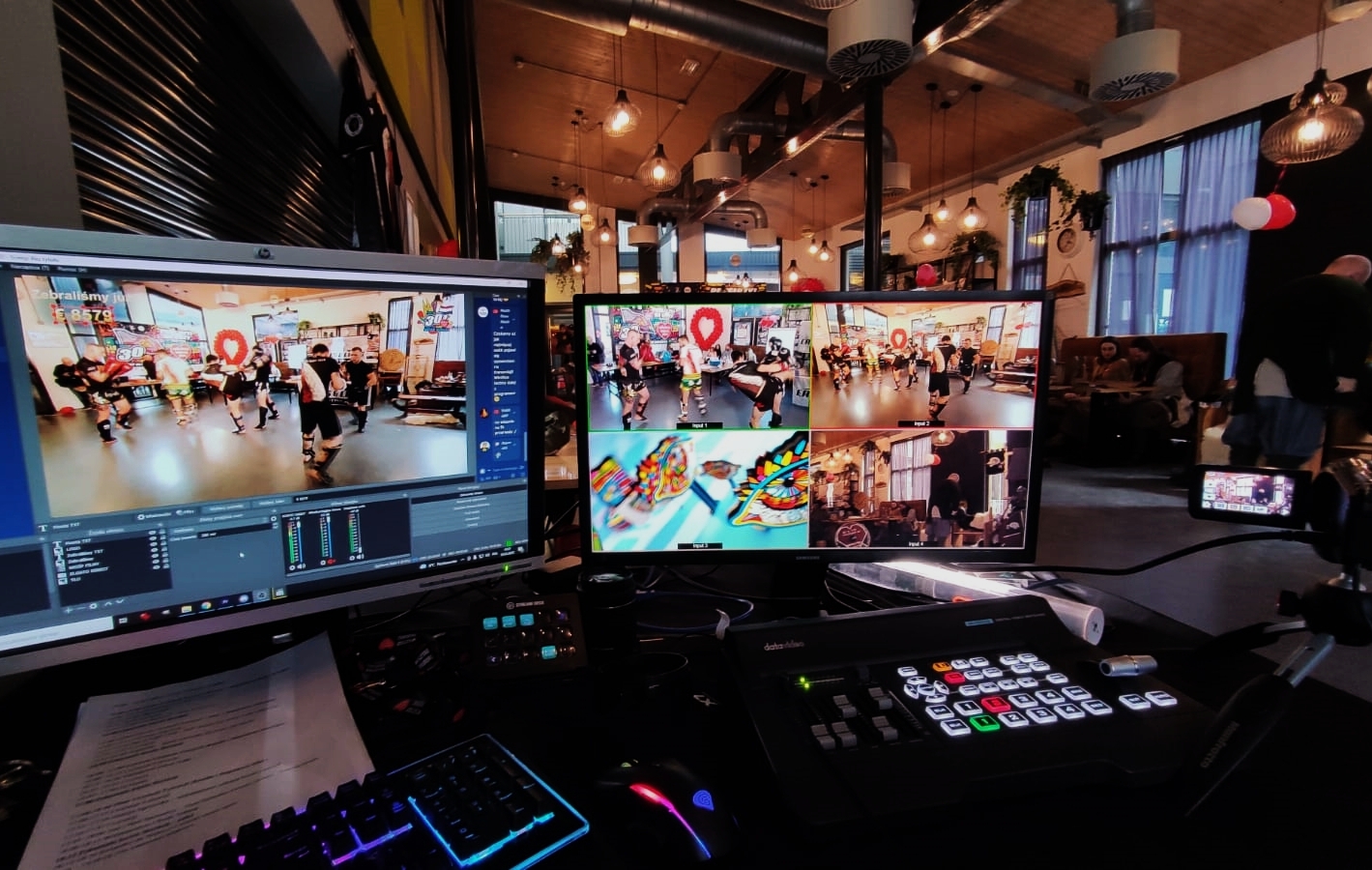Ever wondered what happens behind the curtain of a live stream? Today, we’re diving deep into the world of backstage live stream, where the magic happens before it hits your screens. From setup to execution, we’ll peel back the layers and show you the inner workings of this digital phenomenon. So, grab your popcorn, because we’re about to spill the tea on what goes on behind the scenes!
The world of live streaming has exploded in popularity over the past few years. Platforms like YouTube, Twitch, and Instagram have turned everyday people into broadcasting sensations. But have you ever stopped to think about the preparation and effort that goes into making these streams look so effortless? That’s where the backstage live stream comes in – the hidden world that makes everything tick.
Understanding backstage live stream is like cracking open a code to understanding how content creators manage to keep their audiences hooked. It’s not just about hitting the ‘go live’ button; it’s about planning, coordination, and a whole lot of tech-savviness. Let’s take a closer look at what makes this process so fascinating.
Read also:Frank Dux The Man Who Redefined Martial Arts
What Exactly is Backstage Live Stream?
In its simplest form, a backstage live stream refers to everything that happens behind the scenes before, during, and after a live broadcast. This includes everything from setting up cameras and lighting to managing sound levels and interacting with the audience in real time. It’s the backbone of any successful live stream, and without it, the show wouldn’t go on.
Think of it like a theater production. The actors on stage get all the glory, but it’s the crew backstage who make sure the lights shine, the music plays, and the props are in the right place at the right time. In the digital world, the ‘crew’ consists of producers, editors, sound engineers, and sometimes even AI tools that help automate certain processes.
Here’s a quick rundown of what typically happens in a backstage live stream:
- Camera setup and positioning
- Lighting adjustments
- Audio checks
- Script preparation (if applicable)
- Interaction planning with the audience
Why is Backstage Live Stream Important?
Without proper backstage planning, live streams can quickly turn into a chaotic mess. Imagine trying to broadcast without checking your audio levels or ensuring your internet connection is stable. Disaster waiting to happen, right? That’s why the backstage process is so crucial. It sets the foundation for a smooth and engaging experience for both the creator and the audience.
Studies show that viewers are more likely to engage with content that looks polished and professional. According to a report by Statista, 70% of consumers prefer watching live streams from brands they trust, and a well-executed backstage setup plays a huge role in building that trust. So, if you’re a content creator looking to grow your audience, paying attention to your backstage live stream is a no-brainer.
Key Components of a Successful Backstage Live Stream
Now that we know why backstage live stream is important, let’s break down the key components that make it successful. Here’s what you need to focus on:
Read also:Hal Linden The Unsung Hero Of Modern Cinema
- Equipment: Investing in good quality cameras, microphones, and lighting can make a world of difference in how your stream looks and sounds.
- Software: Tools like OBS Studio, Streamlabs, and XSplit are game-changers when it comes to managing your live stream.
- Rehearsals: Just like any performance, practice makes perfect. Rehearsing your content beforehand can help you avoid awkward pauses or technical glitches.
- Engagement: Don’t forget about your audience! Planning how you’ll interact with them during the stream can keep them hooked from start to finish.
Setting Up Your Backstage Live Stream
Alright, so you’re ready to dive into the world of backstage live stream. Where do you start? The first step is setting up your equipment. This might sound simple, but trust me, it’s where most people trip up. Here’s a step-by-step guide to help you get started:
First things first, you’ll need a reliable camera. Whether you’re using a DSLR, a webcam, or even your smartphone, make sure it’s capable of capturing high-quality video. Next, invest in a decent microphone. Nothing kills a live stream faster than poor audio quality. Finally, don’t forget about lighting. Good lighting can make even the most basic setup look professional.
Once your equipment is sorted, it’s time to set up your software. Programs like OBS Studio are free and offer a ton of customization options. You can add overlays, transitions, and even integrate with social media platforms for a seamless experience.
Tips for a Smooth Setup
Here are a few tips to ensure your setup runs smoothly:
- Test everything before going live – cameras, audio, lighting, and internet connection.
- Create a backup plan in case something goes wrong.
- Keep your workspace organized and clutter-free.
Managing Your Backstage Live Stream
Now that your setup is ready, it’s time to focus on managing your backstage live stream. This involves everything from monitoring your stream in real-time to interacting with your audience. It’s a lot to juggle, but with the right tools and strategies, you can make it look effortless.
One of the most important aspects of managing a live stream is keeping an eye on your analytics. Tools like YouTube Analytics and Twitch Insights can provide valuable data on viewer engagement, peak hours, and drop-off points. Use this information to refine your content and improve future streams.
Engaging Your Audience
Engagement is key to a successful live stream. Here are a few ways to keep your audience hooked:
- Encourage viewers to ask questions and respond to them in real-time.
- Use polls and quizzes to make the experience interactive.
- Shout out to new followers or viewers who engage with your content.
Common Challenges in Backstage Live Stream
Let’s be real – not every live stream goes off without a hitch. Technical glitches, internet outages, and unexpected interruptions can throw a wrench in even the best-laid plans. But don’t worry; with a little preparation, you can overcome these challenges and keep your stream running smoothly.
One of the most common issues is audio lag. This can happen if your internet connection isn’t stable or if your equipment isn’t up to par. To avoid this, make sure you’re using a wired connection whenever possible and invest in high-quality audio equipment.
Solutions to Common Problems
Here are some solutions to common backstage live stream problems:
- Internet Issues: Use a wired connection and consider investing in a backup hotspot.
- Audio Problems: Check your microphone settings and ensure your software is updated.
- Camera Malfunctions: Have a backup camera ready to go in case your primary one fails.
Backstage Live Stream Trends to Watch Out For
As with any industry, the world of live streaming is constantly evolving. New technologies and trends are emerging all the time, and staying ahead of the curve can give you a competitive edge. Here are a few trends to watch out for in the world of backstage live stream:
First up, we have virtual reality (VR) and augmented reality (AR). These technologies are starting to make their way into live streams, offering viewers a more immersive experience. Next, there’s the rise of AI-powered tools that can automate tasks like moderation and analytics. Finally, don’t underestimate the power of community-building features like chatbots and interactive widgets.
How to Stay Ahead of the Curve
To stay ahead of the game, here are a few tips:
- Keep up with industry news and trends.
- Experiment with new technologies and tools.
- Listen to your audience and adapt to their needs.
The Future of Backstage Live Stream
So, where is the world of backstage live stream headed? As technology continues to advance, we can expect to see even more innovation in this space. From 4K streaming to AI-driven content creation, the possibilities are endless. The key is to stay flexible and open to change.
According to experts, the global live streaming market is expected to grow at a CAGR of 23.6% from 2023 to 2030. This means there’s never been a better time to get involved in the world of live streaming. Whether you’re a content creator, a business owner, or just someone who loves watching live streams, the future looks bright.
Preparing for the Future
Here’s how you can prepare for the future of backstage live stream:
- Invest in high-quality equipment and software.
- Stay informed about emerging technologies and trends.
- Focus on building a strong community around your content.
Final Thoughts
Backstage live stream might not be the most glamorous part of content creation, but it’s undoubtedly one of the most important. From setting up your equipment to managing your stream in real-time, every aspect plays a crucial role in delivering a seamless experience to your audience. By understanding the ins and outs of backstage live stream, you can take your content to the next level and stand out in a crowded digital landscape.
So, what are you waiting for? Get out there and start creating. And don’t forget to share your experiences with us in the comments below. Who knows? You might just inspire someone else to take their first step into the world of live streaming.
Table of Contents
What Exactly is Backstage Live Stream?
Why is Backstage Live Stream Important?
Key Components of a Successful Backstage Live Stream
Setting Up Your Backstage Live Stream
Managing Your Backstage Live Stream
Common Challenges in Backstage Live Stream


